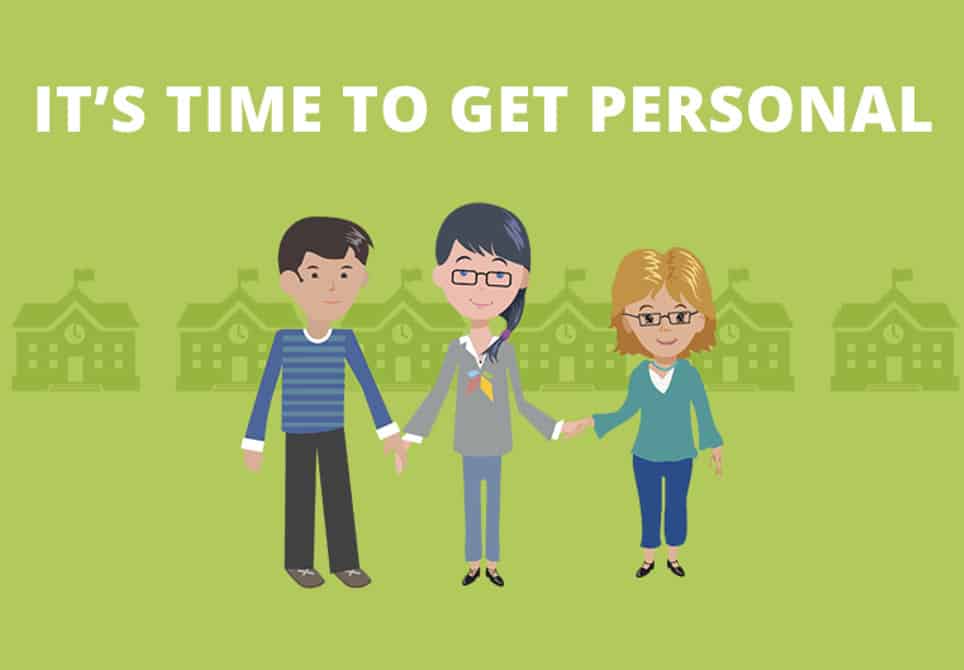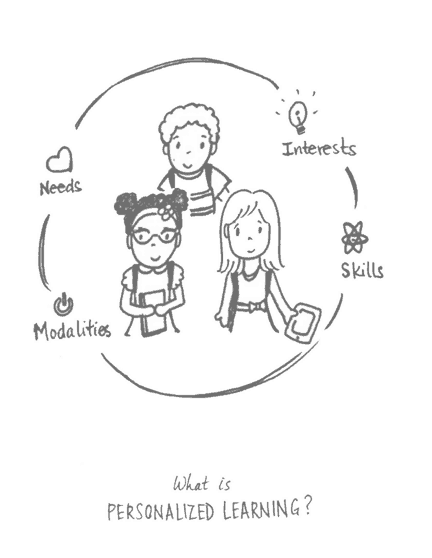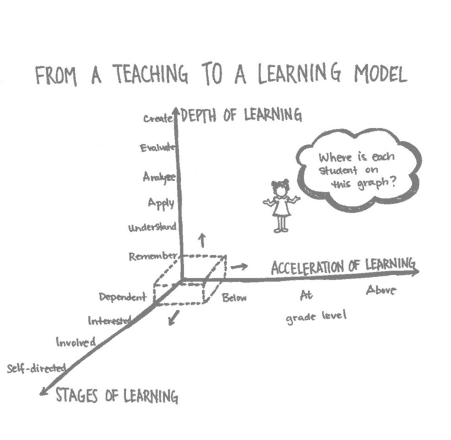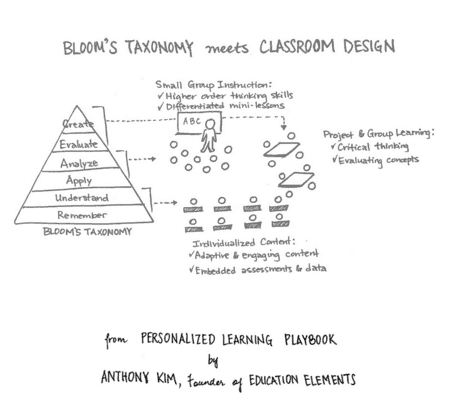Design Thinking for Personalized Learning: 5 Strategies for Effective Whole School Design

Technology has drastically and quickly changed the way we live, work and play. It has also opened new doors for how we learn, teach and engage. Developing a personalized path for students that engage them more deeply and accelerate their learning is not only possible, but necessary to improve the way that we currently do school.
We may not be able to list the jobs that will exist 30 years from now, but we can assume that critical thinking, problem solving, collaboration, empathy, communication and passion will be in high demand. Personalized Learning allows schools to be more responsive to the future needs of society by engaging students in the right lesson at the right time, encouraging them to take ownership over their learning and placing an emphasis on interest that is often missing in more traditional models.

In the Personalized Learning Playbook, Anthony Kim outlines the what, why and how of personalized learning. According to Anthony:
“The components of customized education have always existed, but never before have we had the capability to extend that personalized approach to all students of all abilities. The accessibility and effectiveness of technology is at a ‘tipping point’ where it can deliver on its promise while creating more room for creativity and connection than ever before.”
Education Elements 2014-15 Impact Report: The Positive Power of Personalized Learning
|
Ed Elements is leading the charge in encouraging schools and districts to think differently when it comes to personalized learning. This is evident in they way that Kim writes about whole school design. Here are five things to keep in mind as you seek to transform the way that you do school:
5 Strategies for Effective Whole School Design
1. Design begins with empathy — Put yourself in your students’ shoes. In product design, companies think a LOT about UX or user experience. As educators, we have to do the same for our students. Being thoughtful about what we want students to do, engage with, be surrounded by, etc supports the development of a quality Learner Experience (LX). Kim suggests really putting yourself in their shoes. “Sit in their chairs, follow their timetables and instruction. Track your engagement, excitement, boredom and learning.”
2. Observe your own learning process. Technology has changed how we seek and receive information. Think about your most meaningful learning experiences:
- What got you motivated and excited to learn?
- What were your steps in the learning process?
- What tools, resources, peers, and experiences did you utilize?
- What combination works best for you?
- Where and when did you get stuck along the way?
- At what point did you feel like you mastered it, or are “good enough” at it?
- How does this reflection affect your understanding of your students’ learning approaches?
- What changes would you consider?
The above questions are a great resource for thinking through your own learning process, but they could also be used to help students reflect on their learning process. Part of increasing student ownership is helping them to understand how they learn best.
3. Redefine goals. Staying flexible is key and redefining goals for each individual student is extremely important to their success. You need to have a good understanding of where students are at and where they need to be. Reflecting and redefining these goals should be done regularly.

4. Rethink the environment. The image of a traditional workplace has shifted drastically, what school looks like should change too. Learning is no longer confined to a desk, in a classroom, in a school between the hours of 8am and 3pm. Set the stage for powerful learning and create an environment that fosters that culture.
5. Develop a mindset of iteration. Design thinking is dependent on the idea of trying new things, reflecting on their success and making the adjustments necessary for the next attempt. Embracing this mindset encourages a dramatic shift in practice while allowing a safe place to try new things without a fear of failing — this is important for leaders, teachers and students. Don’t spend so much time planning that you forget to act. Try something and change it up as needed. Anthony said:
“New ideas get traction, they are used and refined by users (and students) and gradually they become so familiar and intuitive that we don’t remember the origins of the process or the product. It takes time, experimenting, iteration, and evolution to get new processes to reach their potential and become nearly automatic.”
The work of transforming opportunities for students is difficult yet exciting. As we seek to better prepare our students for tomorrow and beyond, it is important that we utilize the tools that we have with talented and dedicated teachers that make learning exciting and engaging for students. Education Elements is dedicated to empowering teachers to personalize learning and helping district leaders scale across all schools. They have built a large network of partners that support this mission and create a comprehensive experience for educators and students.
From the Personalized Learning Playbook:
|
Kim’s Personalized Learning Playbook is a great tool for changing hearts and minds and getting people excited about personalized learning. It will empower teachers to personalize learning and help district leaders to scale it across all schools.
Want to learn more? You can buy the book here, download an excerpt here, see the image gallery here or see some of the resources that inspired it, and join an online book club, here. Education Elements will also be at iNACOL next week:
- Sunday, November 8: Pre-conference session with district leaders from 7 school districts: Don’t Reinvent the Wheel will be a chance to participate in an interactive workshop and small group discussions with pioneers in the personalized learning space.
- Tuesday, November 10: Join 3 inspiring districts for: There’s More Than One Way to Design Personalized Learning. Hear about their unique approaches to rolling out personalized learning in their districts and since Ed Elements not a sit-and-listen-to-a-panel type of company, expect some activities, interaction and lots of idea sharing.
- Tuesday, November 10: Personalized Learning Playbook Book Signing: Get your playbook signed by the author Anthony Kim.
- Booth 338: Where the Magic (and Prizes) Happens: When you come by Booth 338 it isn’t going to be finished. It isn’t because Ed Elements is slow at building though; it’s because you will be part of creating it. Come see how, take some great pictures, enter to win prizes, and chat with their team of personalized learning experts.
Stay in-the-know with all things EdTech and innovations in learning by signing up to receive the weekly Smart Update.






Mary Beth Cunat
Megan,
I am really glad to see someone talking about personalized learning as personalized for context. So excited to see design elements embedded. Brilliant. It is fundamentally about empathy.
shobana
The 5 strategies are amazing and most teachers and education specialists are aware of these. But the challenge is in implementing them. It can definitely not be implemented just by the teachers in a classroom and school authorities. Especially for kids, their parents play a very important role in personalized learning. Because it is at home a child's true character and interest are revealed. And it is the parents who have already stored some information into the child's brain library from early childhood.
Brook Boswell
Always keep in mind were the students are coming from and try to make it interesting and real